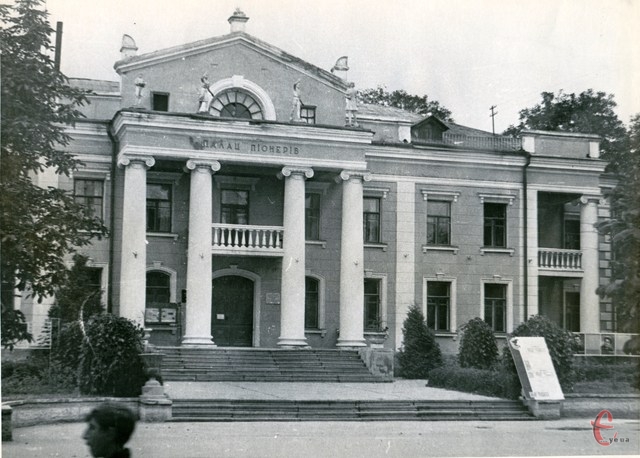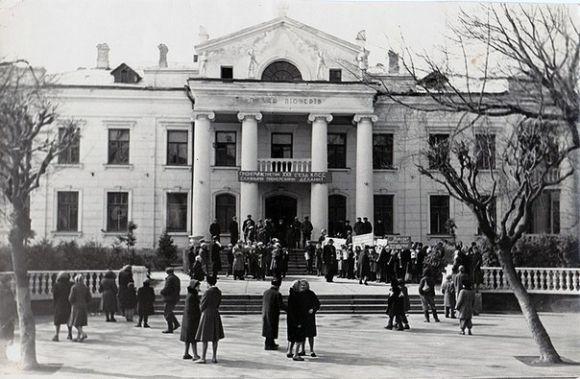
A long history can be traced back to the building of the Khmelnytsky Puppet Theater, situated at 46 Proskurivska Street in the city center. Originally built in the 1880s, the two-story estate was set in a lovely garden, surrounded by wrought-iron fencing. Its facade is decorated with a portico with four Ionic columns, crowned by a triangular pediment with a semicircular skylight. There is a balcony decorated with a balustrade between the middle columns. Painting highlights the details of the decor. The house was rebuilt several times in the 20th century until it acquired its current appearance. Haim Marants, a merchant of the first guild and one of the richest residents of Proskurov in the late 19th and early 20th centuries, owned the estate.

The Marants family was extensive, and therefore local residents sometimes confused the names of the merchants, believing that the estate belonged to his relative Solomon Marants. However, documents in the regional archive testify that the owner was Haim Marantz. He conducted a wholesale trade in flour, sugar, and wood, maintained the largest oil and gas warehouse in the city, rented out numerous real estate, and owned 12 stores selling various goods. So, it is not surprising that the merchant had one of the best estates in the city, with a two-story mansion surrounded by a beautiful garden. The merchant H. Marants was known among the Jewish community of Proskurov as a philanthropist and a pious person. On the plot next to the mansion, which also belonged to him, at the end of the 19th century, at his own expense, the merchant founded a charitable institution-a shelter for Jews and built a small synagogue, and placed twelve shops.

In fact, the entire block nearby belonged to a merchant. H. Marants died in 1912, according to his will, the shelter became the property of the city, and the mansion was given to his sons Shlyoma and Menashe, who at that time were successful merchants and lived in Odessa. From the first days of Soviet power (end of 1920), H. Marantz’s building was at the disposal of the headquarters of a separate cavalry brigade of H. Kotovskyi, later various Soviet state and military institutions were located here. From the beginning of the 1930s to 1938, the building housed the district department of the NKVD, in 1939-1941 – the special department of the NKVD of the 5th Army Cavalry Group. During the years of Stalinist repressions, thousands of innocent people were killed in the basements adjacent to this building on false charges. The remains of the victims were discovered in 1966, during the construction of the Center for Cultural Affairs.
After the Second World War, the estate was handed over to the Palace of Pioneers. The minor reconstruction of the building began then. In 1949-1952, according to the project of the famous Khmelnytskyi architect Hnat Chekirda, the building was reconstructed – the main entrance colonnade was built, the interior rooms were replanned, and a 300-seat auditorium was arranged. The facade is decorated with sculptures. Sculptures of pioneer children were also installed, but they were later removed.
In 1989, the Palace of Pioneers moved to new premises, and the former merchant’s house housed the regional puppet theater, which was founded in 1970. Today, the institution is considered one of the best in Ukraine and has the honorary title of “academic theater”.
Today, the Academic Regional Puppet Theater is one of the oldest buildings in the city, built in a classical style and represents Proskurov’s architectural development in the late 19th and early 20th centuries.
